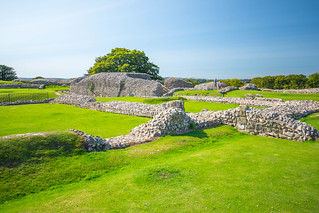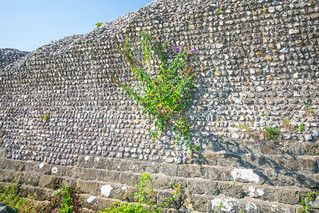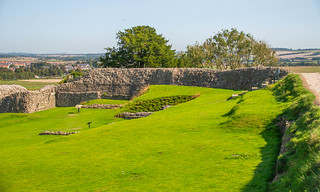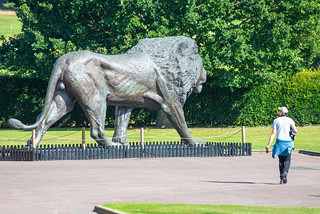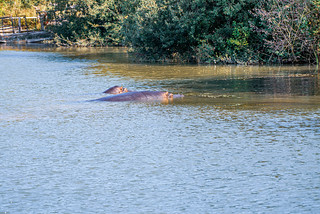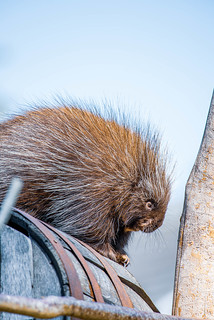Old Sarum
Old Sarum, in Wiltshire, South West England, is the now ruined and deserted site of the earliest settlement of Salisbury. Situated on a hill about 2 miles (3 km) north of modern Salisbury near the A345 road, the settlement appears in some of the earliest records in the country. It is an English Heritage property and is open to the public.
The great stone circles of Stonehenge and Avebury were erected nearby and indications of prehistoric settlement have been discovered from as early as 3000 bc. An Iron Age hillfort was erected around 400 bc, controlling the intersection of two trade paths and the Hampshire Avon. The site continued to be occupied during the Roman period, when the paths were made into roads. The Saxons took the British fort in the 6th century and later used it as a stronghold against marauding Vikings. The Normans constructed a motte and bailey castle, a stone curtain wall, and a great cathedral. A royal palace was built within Old Sarum Castle for King Henry I and was subsequently used by Plantagenet monarchs. This heyday of the settlement lasted for around 300 years until disputes between the Sheriff of Wiltshire and the Bishop of Salisbury finally led to the removal of the church into the nearby plain. As New Salisbury grew up around the construction site for the new cathedral in the early 13th century, the buildings of Old Sarum were dismantled for stone and the old town dwindled. Its long-neglected castle was abandoned by Edward II in 1322 and sold by Henry VIII in 1514.
en.wikipedia.org
Longleat is an English stately home and the seat of the Marquesses of Bath. A leading and early example of the Elizabethan prodigy house, it is adjacent to the village of Horningsham and near the towns of Warminster and Westbury in Wiltshire, and Frome in Somerset.
The Grade I listed house is set in 1,000 acres (400 ha) of parkland landscaped by Capability Brown, with 4,000 acres (1,600 ha) of let farmland and 4,000 acres (1,600 ha) of woodland, which includes a Center Parcs holiday village.[1] It was the first stately home to open to the public, and the Longleat estate has the first safari park outside Africa and other attractions including a hedge maze
en.wikipedia.org
Longleat Safari and Adventure Park
Hippopotamus
Hippopotamus
Open the full Longleat set
 Share
Share

Old Sarum, in Wiltshire, South West England, is the now ruined and deserted site of the earliest settlement of Salisbury. Situated on a hill about 2 miles (3 km) north of modern Salisbury near the A345 road, the settlement appears in some of the earliest records in the country. It is an English Heritage property and is open to the public.
The great stone circles of Stonehenge and Avebury were erected nearby and indications of prehistoric settlement have been discovered from as early as 3000 bc. An Iron Age hillfort was erected around 400 bc, controlling the intersection of two trade paths and the Hampshire Avon. The site continued to be occupied during the Roman period, when the paths were made into roads. The Saxons took the British fort in the 6th century and later used it as a stronghold against marauding Vikings. The Normans constructed a motte and bailey castle, a stone curtain wall, and a great cathedral. A royal palace was built within Old Sarum Castle for King Henry I and was subsequently used by Plantagenet monarchs. This heyday of the settlement lasted for around 300 years until disputes between the Sheriff of Wiltshire and the Bishop of Salisbury finally led to the removal of the church into the nearby plain. As New Salisbury grew up around the construction site for the new cathedral in the early 13th century, the buildings of Old Sarum were dismantled for stone and the old town dwindled. Its long-neglected castle was abandoned by Edward II in 1322 and sold by Henry VIII in 1514.
en.wikipedia.org





